Given a feature map like:
features = np.array([
[1, 2, 3, 4],
[2, 4, 4, 3],
[3, 2, 1, 4],
], dtype=np.float64)
reflecting a batch_size of
batch_size = features.shape[0]
and
k = features.shape[1]
One has that implementing the above Formulas in Tensorflow could be expressed (prototyped) by:
dim = (batch_size, features.shape[1])
def zero(i):
arr = np.ones(dim)
arr[i] = 0
return arr
mapper = [zero(i) for i in range(batch_size)]
elems = (features, mapper)
m = (1 / (batch_size - 1)) * tf.map_fn(lambda x: tf.math.reduce_sum(x[0] * x[1], axis=0), elems, dtype=tf.float64)
pairs = tf.map_fn(lambda x: tf.concat(x, axis=0) , tf.stack([features, m], 1), dtype=tf.float64)
compactness_loss = (1 / (batch_size * k)) * tf.map_fn(lambda x: tf.math.reduce_euclidean_norm(x), pairs, dtype=tf.float64)
with tf.Session() as sess:
print("loss value output is: ", compactness_loss.eval())
Which yields:
loss value output is: [0.64549722 0.79056942 0.64549722]
However a single measure is required for the batch, therefore it is necessary to reduce it; by the summation of all values.
The wanted Compactness Loss function à la Tensorflow is:
def compactness_loss(actual, features):
features = Flatten()(features)
k = 7 * 7 * 512
dim = (batch_size, k)
def zero(i):
z = tf.zeros((1, dim[1]), dtype=tf.dtypes.float32)
o = tf.ones((1, dim[1]), dtype=tf.dtypes.float32)
arr = []
for k in range(dim[0]):
arr.append(o if k != i else z)
res = tf.concat(arr, axis=0)
return res
masks = [zero(i) for i in range(batch_size)]
m = (1 / (batch_size - 1)) * tf.map_fn(
# row-wise summation
lambda mask: tf.math.reduce_sum(features * mask, axis=0),
masks,
dtype=tf.float32,
)
dists = features - m
sqrd_dists = tf.pow(dists, 2)
red_dists = tf.math.reduce_sum(sqrd_dists, axis=1)
compact_loss = (1 / (batch_size * k)) * tf.math.reduce_sum(red_dists)
return compact_loss
Of course the Flatten() could be moved back into the model for convenience and the k could be derived directly from the feature map; this answers your question. You may just have some trouble finding out the the expected values for the model are - feature maps from the VGG16 (or any other architechture) trained against the imagenet for instance?
The paper says:
In our formulation (shown in Figure 2 (e)), starting froma pre-trained deep model, we freeze initial features (gs) and learn (gl) and (hc). Based on the output of the classification sub-network (hc), two losses compactness loss and descriptiveness loss are evaluated. These two losses, introduced in the subsequent sections, are used to assess the quality of the learned deep feature. We use the provided one-class dataset to calculate the compactness loss. An external multi-class reference dataset is used to evaluate the descriptiveness loss.As shown in Figure 3, weights of gl and hc are learned in the proposed method through back-propagation from the composite loss. Once training is converged, system shown in setup in Figure 2(d) is used to perform classification where the resulting model is used as the pre-trained model.
then looking at the "Framework" backbone here plus:
AlexNet Binary and VGG16 Binary (Baseline). A binary CNN is trained by having ImageNet samples and one-class image samples as the two classes using AlexNet andVGG16 architectures, respectively. Testing is performed using k-nearest neighbor, One-class SVM [43], Isolation Forest [3]and Gaussian Mixture Model [3] classifiers.
Makes me wonder whether it would not be reasonable to add suggested the dense layers to both the Secondary and the Reference Networks to a single class output (Sigmoid) or even and binary class output (using Softmax) and using the mean_squared_error as the so called Compactness Loss and binary_cross_entropy as the Descriptveness Loss.
